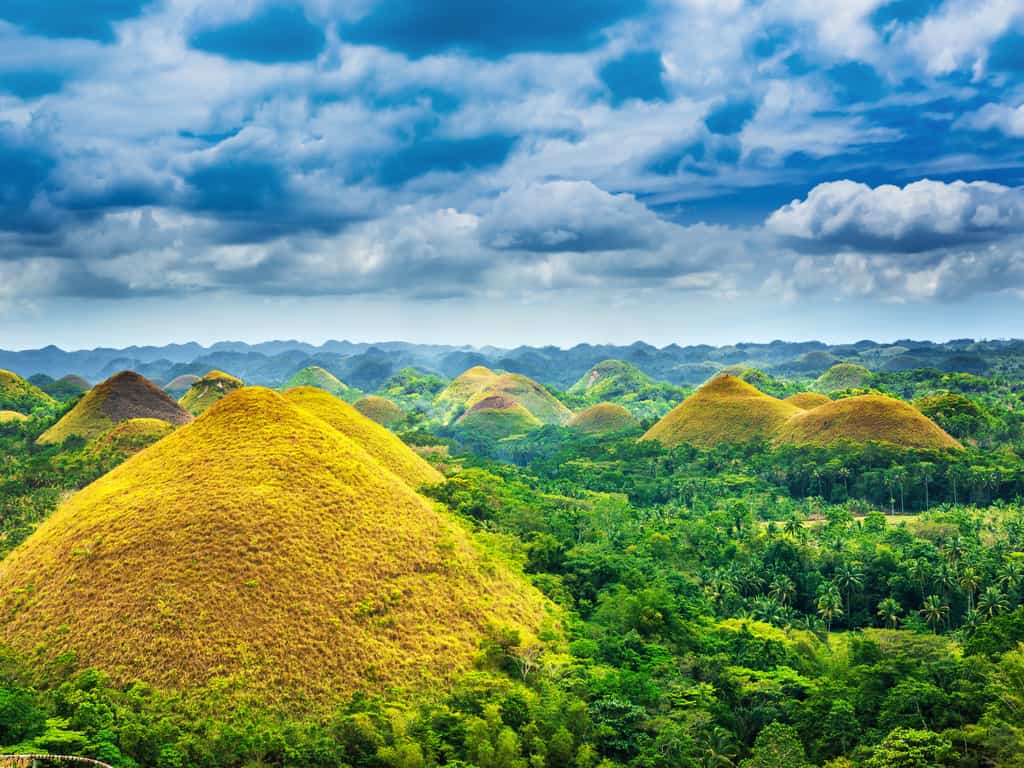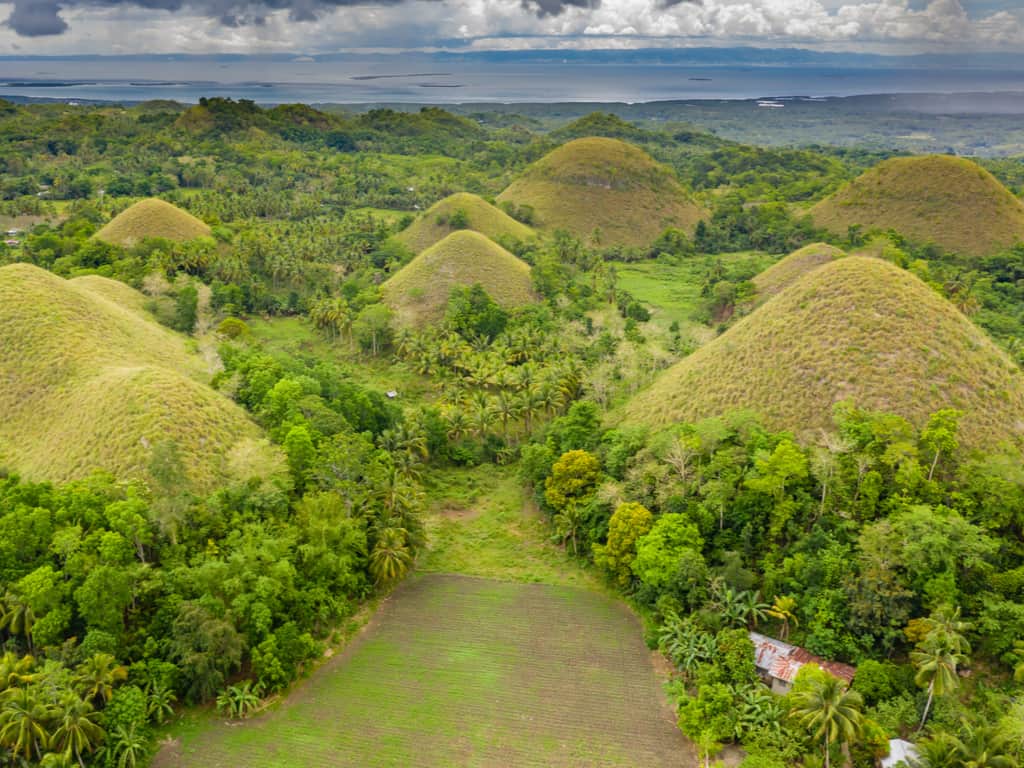The chocolate hills of Bohol are a significant tourist attraction in the Philippines. These chocolate mountains were formed naturally on the island of Bohol in the Philippines over millions of years.
From lush green in the rainy season, colors change to chocolate brown as soon as the dry season arrives.
Some 1,700 chocolate mountains extend across 20 square miles, rising as high as 400 feet – these Chocolate Hills of the Philippines never fail to amuse tourists.
Contents
What is the story of Chocolate Hills, Bohol?
The said stories of how the hills formed are quite funny, to be honest. Some say that two giants fought by hurling rocks, sand, and boulders at each other. The fight subsided, and they became friends, after fighting in this way for days. They left but forgot to undo the mess they created! This is how the hills came to be.
Another legend with a romantic inclination suggests that a powerful and youthful giant named Arogo once fell in love with Aloya, a simple mortal human being. Aloya somehow died, and Arogo ended up sobbing for days. His tears after drying formed the Chocolate Hills of Philippines.

How were the Chocolate Hills of the Philippines formed then?
The land’s limestone base came to existence from the skeletons of sea life. Geological processes gradually lifted the Bohol’s rock, and now water slowly erodes it.
The thing is that weathering is known to carve out limestone all over the world, but the uniformity of shape is what makes the hills unique. Even geologists have not yet concluded this matter.

Chocolate Hills viewing platform
The highest hill, at about 120m, is 5km from the village of Camen. On this hill a viewing platform has been built, from which you have a wide view over the Chocolate Hills.
To enjoy this stunning view, a certain amount of effort is required from the visitor. There are still 214 steps to climb before you can overlook the wide expanse of the Chocolate Hills on the crest of the highest Chocolate Hill.
The hills are covered with hard grass and low bushes, which turn brown at the end of the dry season. This color and the even shape of the hills gave rise to its name. At other times of the year, however, the hills are green and an association with chocolate only occurs in the minds of visitors. This does not detract from the admiration, on the contrary, many people decide to come back in the dry season to see the Chocolate Hills in their chocolate color.

How to get to Chocolate Hills of Bohol?
From Tagbilaran
Get on a bus at the Tagbilaran Mall bus station to Carmen city and get off at the Chocolate Hills stop. From here, it is a walkable distance from the ticket office. You may also hire or rent a car to the ticket office. ‘Habal-Habal’ transport is another option.
From Tubigon
While hiring motorcycles and tricycles rides are a more convenient option, you can also first go to Carmen city by bus and then follow the same route as above. You get buses to Carmen from Tubigon bus terminal.
From Alona Beach
It’s better to book a tour from here. Well, you may also follow the route from Tagbilaran to Carmen by first going to Tagbilaran.

Where to stay near the Chocolate Hills, Bohol?
Providence Travellers Inn und Spa: Hostels are perfect for solo travelers and students. This one is located in Tagbilaran, has a swimming pool, restaurant, garden of its own.
Villa del Carmen Bed & Breakfast: At a very comfortable and intriguing location in Carmen, in direct neighborhood to the chocolate hills.
Henann Resort Alona Beach: For those who like it a little more luxurious. Visit the chocolate hills, with your base at the world-famous Alona Beach.
Final thoughts
Around Bohol, some hills are terraced and others form farmland. It is interesting to note that a similar pattern of islets lies just off the coast of the main island. Will these unique deposits of our earth, which have been formed over millions of years, eventually unite? What do you think?
First of all, the Chocolate Hills have been declared the third national geological monument of the country – which is great. But we can’t wait for them to receive the UNESCO World Heritage designation as well.
